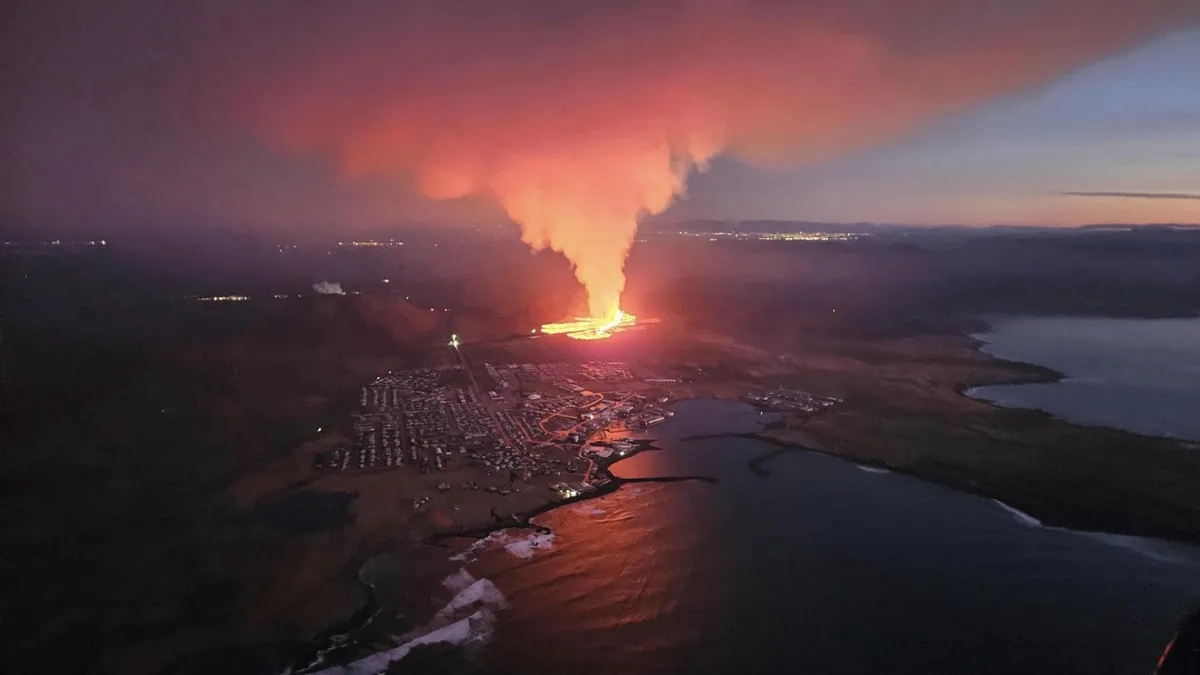
Recent research highlights a concerning relationship between melting glaciers and increased volcanic activity, which could exacerbate climate change. Scientists have observed that hundreds of volcanoes located beneath glaciers in regions such as Antarctica, Russia, New Zealand, and North America may become more explosive and frequent as global temperatures rise. This phenomenon is particularly evident in a new study examining the volcanic activity of six volcanoes in southern Chile during the last ice age.
The study's lead author, Pablo Moreno Yaeger, a graduate student at the University of Wisconsin-Madison, will present these findings at the upcoming 2025 Goldschmidt Conference in Prague. The research indicates that as glaciers retreat due to climate change, the suppressed volcanic activity beneath them is likely to escalate, leading to more frequent and explosive eruptions. Moreno Yaeger stated, "Our findings suggest these volcanoes go on to erupt more frequently and more explosively." This is a significant shift from the past, where glaciers acted as a barrier to volcanic eruptions.
The scientific community has been exploring the effects of melting ice on volcanic systems since the 1970s. The underlying principle is straightforward: the immense weight of glaciers compresses the Earth’s crust and mantle. As glaciers recede, the release of this pressure allows subterranean gases and magma to expand, which can lead to pressure buildups that fuel explosive volcanic eruptions.
A case in point is Iceland, situated atop the diverging North American and Eurasian tectonic plates. Research conducted in 2002 showed that as Iceland's glaciers melted at the end of the last ice age approximately 10,000 years ago, the island experienced a dramatic increase in volcanic activity—eruptions occurred at rates 30 to 50 times higher than before or after this period.
The recent study focused on six volcanoes in southern Chile, including the dormant Mocho-Choshuenco volcano. The researchers utilized the radioactive decay of argon released during volcanic eruptions as an isotopic clock and analyzed crystals that formed within the erupting magmatic rocks. This approach enabled them to trace the volcanic activity in relation to the melting of the Patagonian Ice Sheet.
Between 26,000 and 18,000 years ago, during the peak of the last ice age, the ice cover significantly suppressed volcanic eruptions, allowing a substantial reservoir of magma to build up beneath the surface. As the ice sheet melted, the accumulating pressure within this reservoir eventually led to the formation of the Mocho-Choshuenco volcano.
This issue is not limited to southern Chile. A study from 2020 identified that 245 of the world’s potentially active volcanoes are situated beneath or within 3 miles (5 kilometers) of ice. Moreno Yaeger emphasized that the key factor for increased volcanic explosivity is a thick glacial cover over a magma chamber, which is currently diminishing in areas like Antarctica. Other regions that require further scientific scrutiny include North America, New Zealand, and Russia.
In the short term, volcanic eruptions can produce sulfate aerosols that reflect sunlight, leading to temporary cooling events. However, the long-term effects are concerning. The researchers warned that greenhouse gases released by volcanic eruptions could accelerate climate change. As Moreno Yaeger explained, the cumulative impact of multiple eruptions can contribute to global warming, establishing a feedback loop: melting glaciers trigger eruptions, and in turn, those eruptions escalate warming and further glacier melt.
In summary, the interplay between melting glaciers and volcanic activity presents a complex challenge in the context of global climate change. Continued research in this area is essential to understanding the full implications for our planet's future.